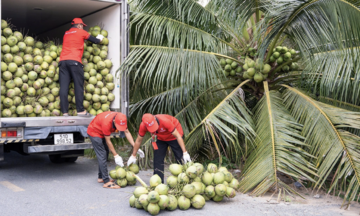Brazil's Ministry of Agriculture announced that China's General Administration of Customs has approved Brazilian sorghum for export. This follows a visit by a Chinese delegation to Brazilian sorghum producers in early August.
Eduardo Porto Magalhaes, coordinator of international plant quarantine inspection and certification at Brazil's Ministry of Agriculture, said the next step is to register Brazilian companies, producers, and exporters interested in selling to China. "We have completed the first round of company registrations and will submit the documents to China," he said. The first shipment of sorghum is expected within the next 60 days. China first announced its plan to import Brazilian sorghum during President Xi Jinping's state visit to Brasilia in 11/2024, marking an upgrade in bilateral relations.
The National Supply Company (Conab) reports that Brazil's sorghum production has doubled in recent years, reaching 4.4 million tons in the 2023-2024 season. However, exports account for less than 1% of the international market. Producers hope that China's interest will open up new opportunities.
Pedro Ottoni, director of the International Maize Alliance and a producer who hosted the Chinese delegation, expressed optimism. "Brazil will become a prominent player in global sorghum production," he said.
 |
Workers shovel sorghum into a processing machine to make alcohol at a factory in Xinzhou, Shandong, China on 21/10/2018. Photo: Reuters |
Workers shovel sorghum into a processing machine to make alcohol at a factory in Xinzhou, Shandong, China on 21/10/2018. Photo: Reuters
While Beijing opens its doors to Brazilian sorghum, imports from the traditional supplier, the US, have declined sharply. According to data from the US Census Bureau, sorghum exports to China in the first 7 months of the year were approximately 82,300 tons, down 97% compared to the same period in 2024.
Craig Meeker, a Kansas farmer and former chairman of the US National Sorghum Producers, noted that US producers have spent 15 years building their reputation and quality with Chinese customers. He believes the impact of China's shift to Brazilian suppliers should not be underestimated. "We have seen Brazil become a formidable competitor in other commodities, and this development with sorghum is truly concerning," Meeker commented.
Not only sorghum but Brazilian soybeans are also becoming an alternative to US soybeans for China, according to traders. The US typically supplies a large portion of China's soybean imports from September to January, before Brazil's harvest.
Last year at this time, Chinese companies had ordered 12 to 13 million tons of US soybeans for delivery between September and November. Currently, no US orders have been placed. One exporter described the market as stagnant. "Under normal circumstances, we would be shipping around 15 cargoes a week," they said.
Instead, China has purchased around 7.4 million tons of soybeans, mainly from South America, for October, meeting 95% of its projected demand for the month. They have also secured one million tons for November, equivalent to 15% of their planned imports. "Looking at the current situation, we believe South American soybeans will be the main source of supply until the end of this year," a Singaporean trader told Reuters.
In 2024, China purchased about 20% of its soybeans from the US, down from 41% in 2016. In the first 7 months of this year, China imported 42.26 million tons from Brazil, compared to 16.57 million tons from the US. US soybeans are cheaper than Brazilian soybeans by about 80-90 cents per bushel for September-October shipments. However, China's 23% tariff on US goods adds another $2 per bushel, making them less competitive. A bushel of soybeans is equivalent to 60 pounds, or 27.2 kg.
Dan Basse, president of AgResource Co in Chicago, estimates that if China continues to refrain from importing US soybeans until mid-November, the total lost sales could reach 14 to 16 million tons, equivalent to billions of USD.
The US Department of Agriculture (USDA) forecasts soybean exports for the 2025-2026 season at 46.4 million tons, down from over 51 million tons in the previous season. Reuters suggests that the USDA may further lower its outlook in its upcoming updated report if the US and China do not finalize trade negotiations.
However, China has not completely closed the door on US soybeans as there are still many orders for delivery from November to January to be filled. Johnny Xiang, founder of AgRadar Consulting in Beijing, said that strong demand from China has pushed up Brazilian soybean prices. "If a US-China trade agreement is reached, the outlook for US soybeans could improve significantly," he observed.
Phien An (Reuters)












